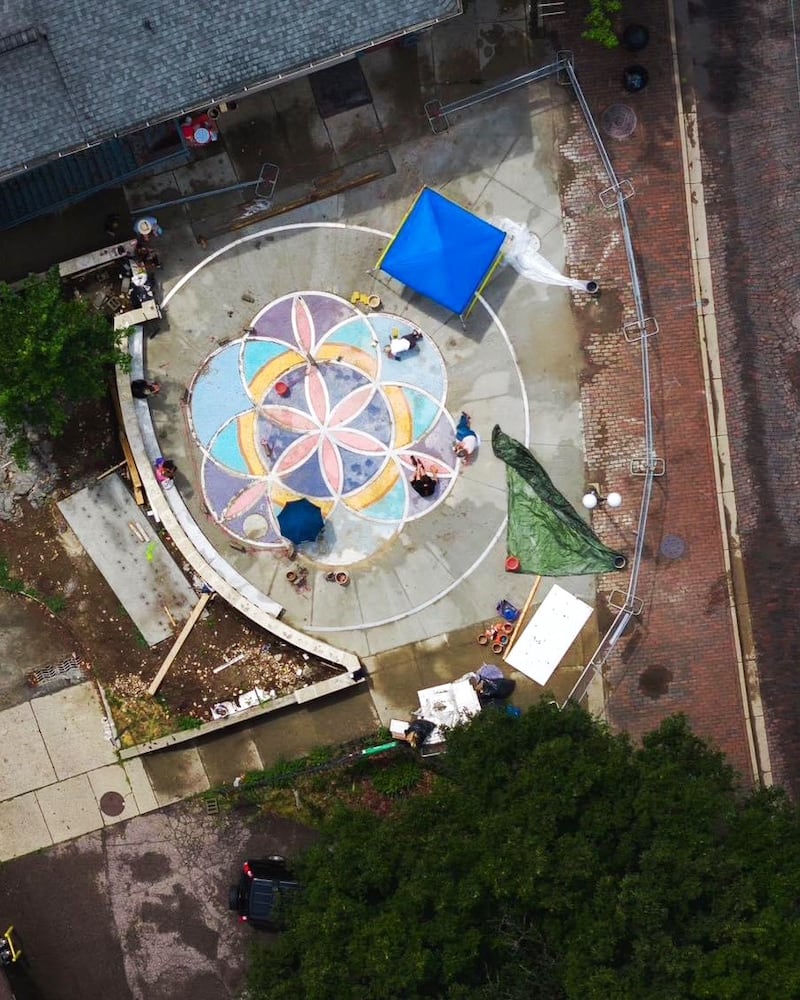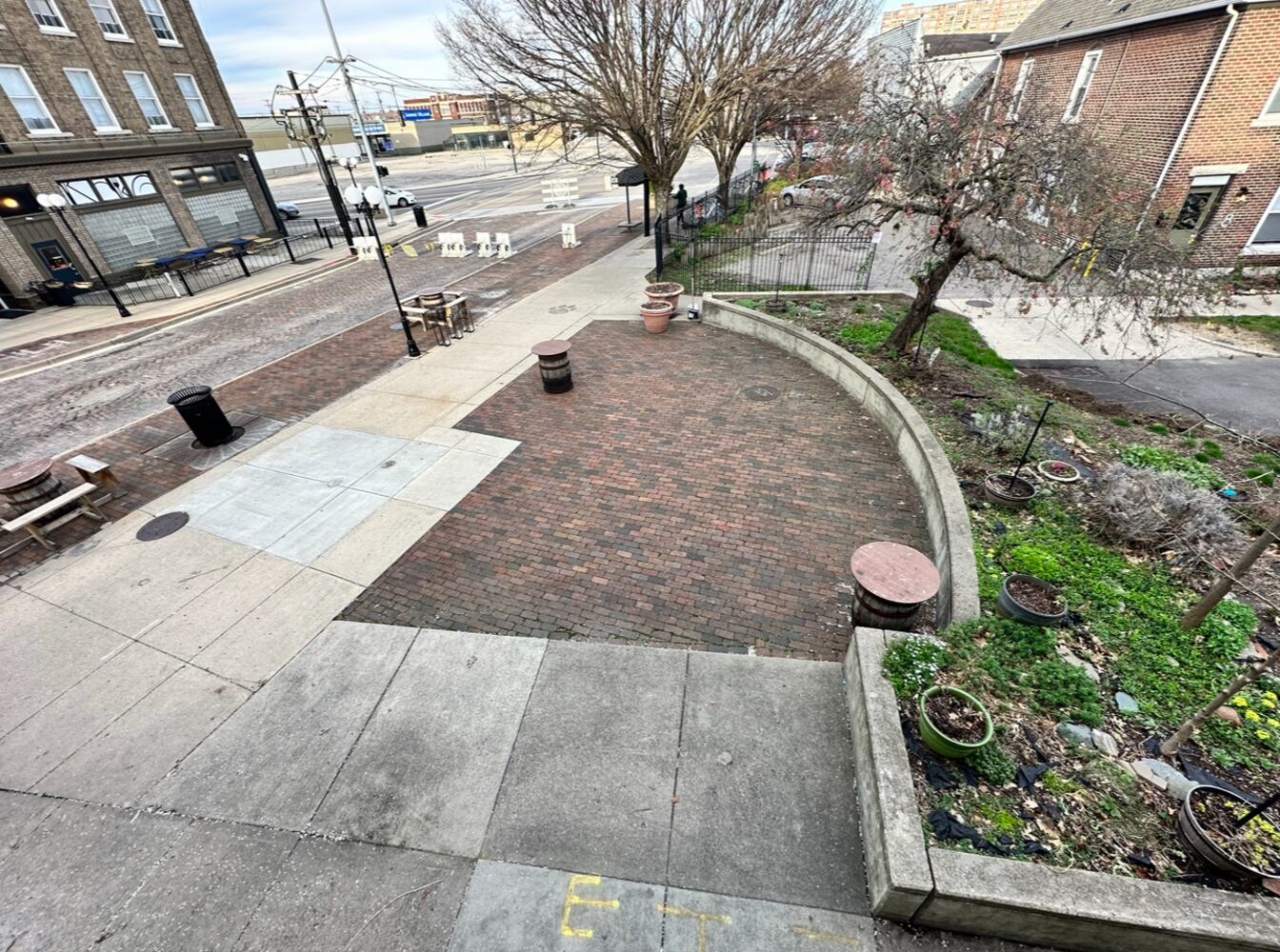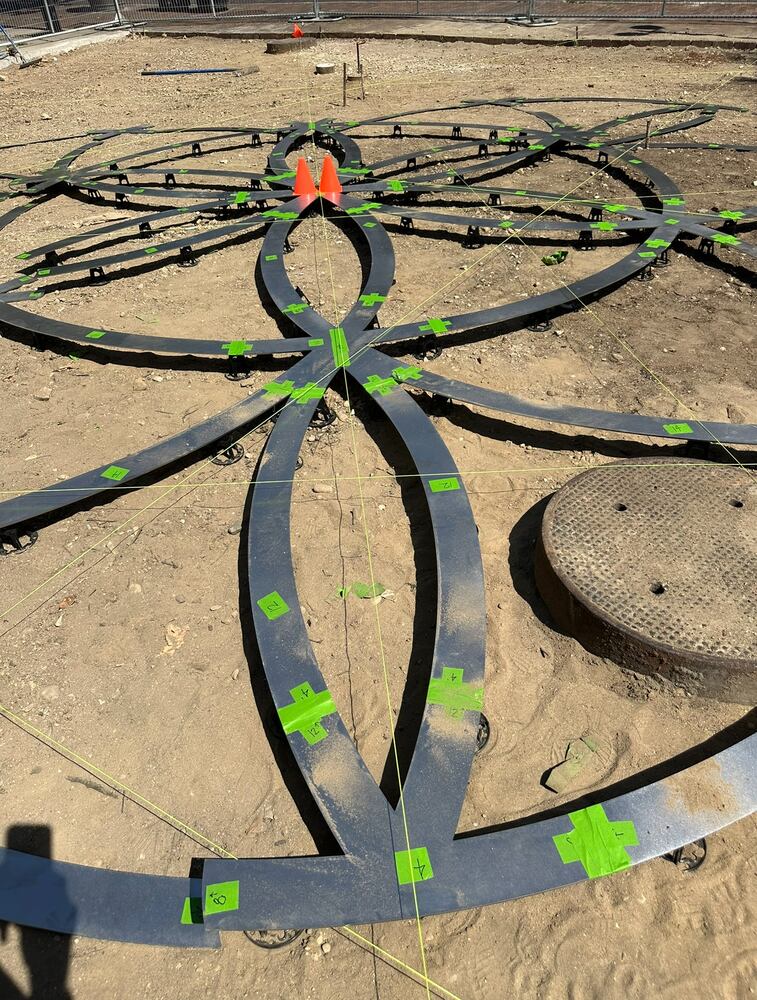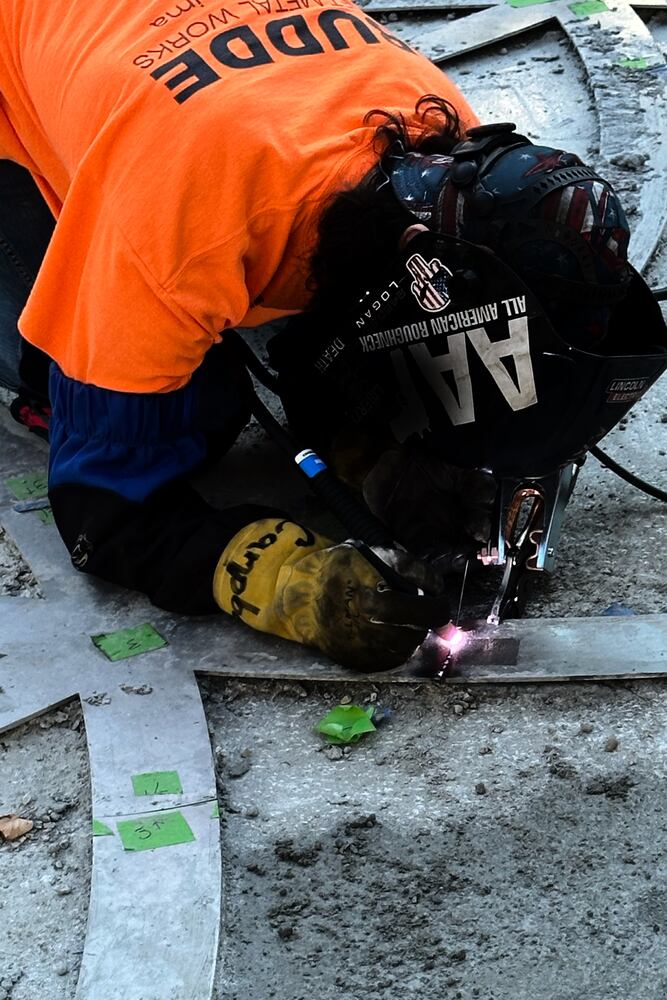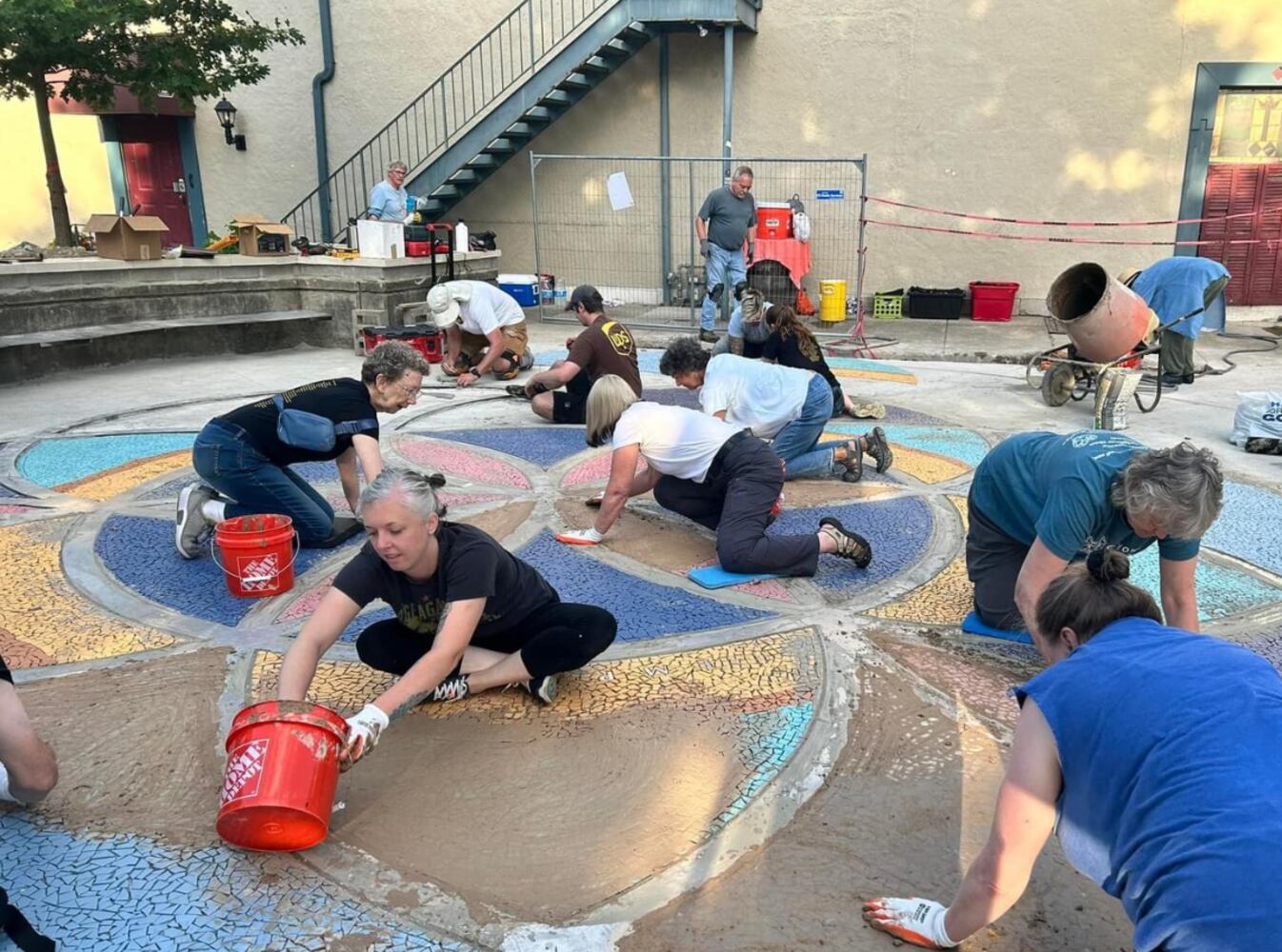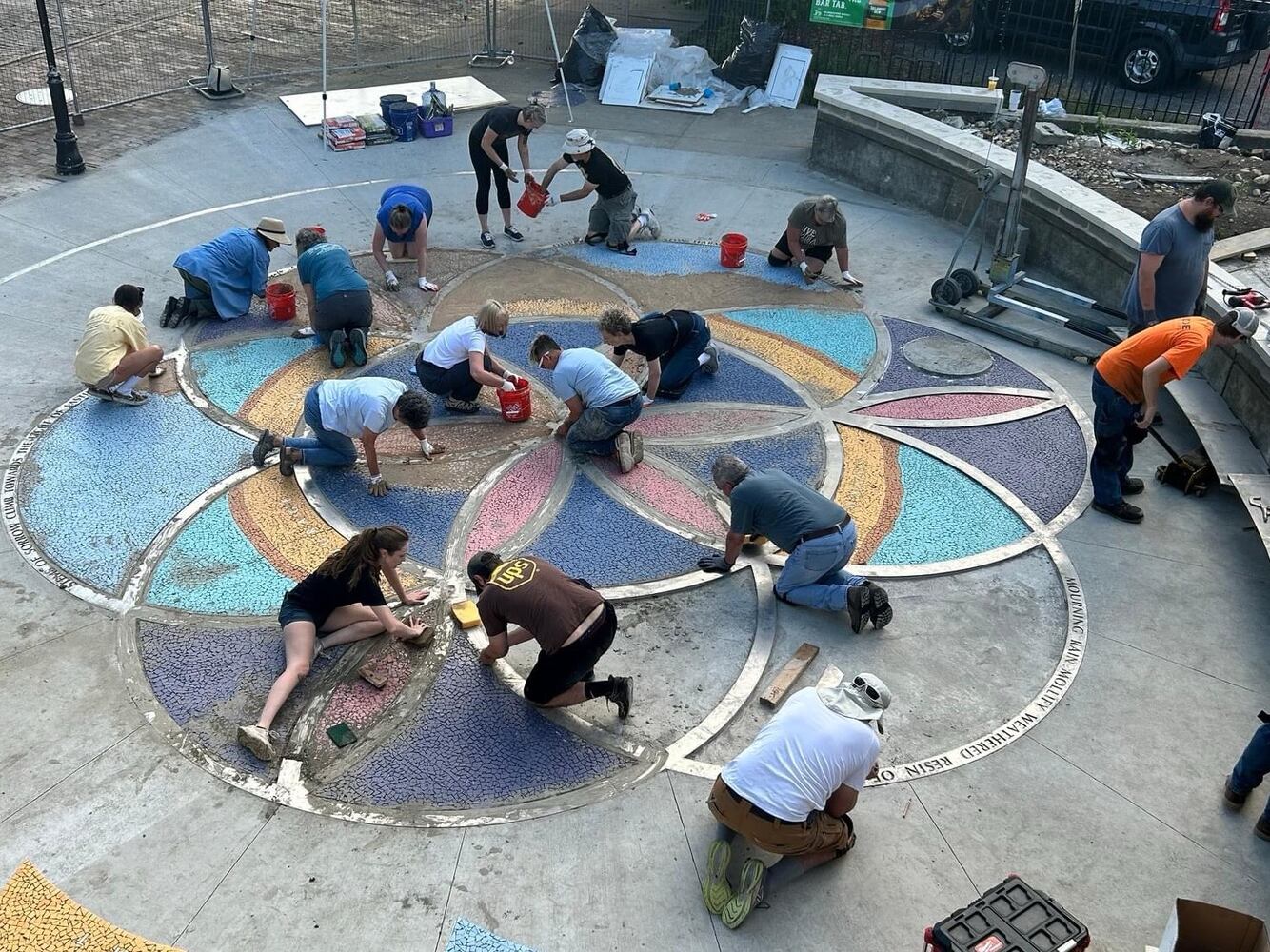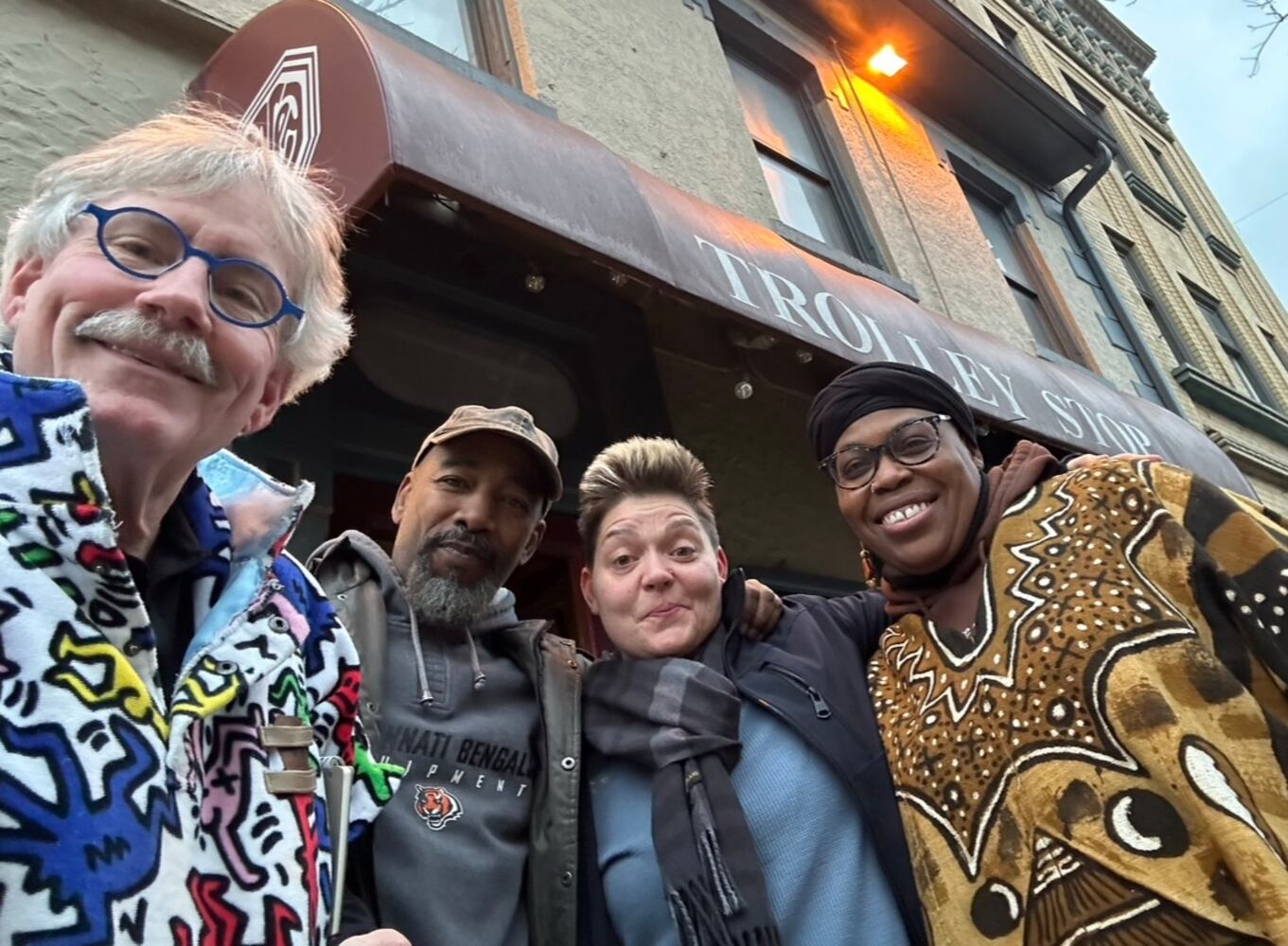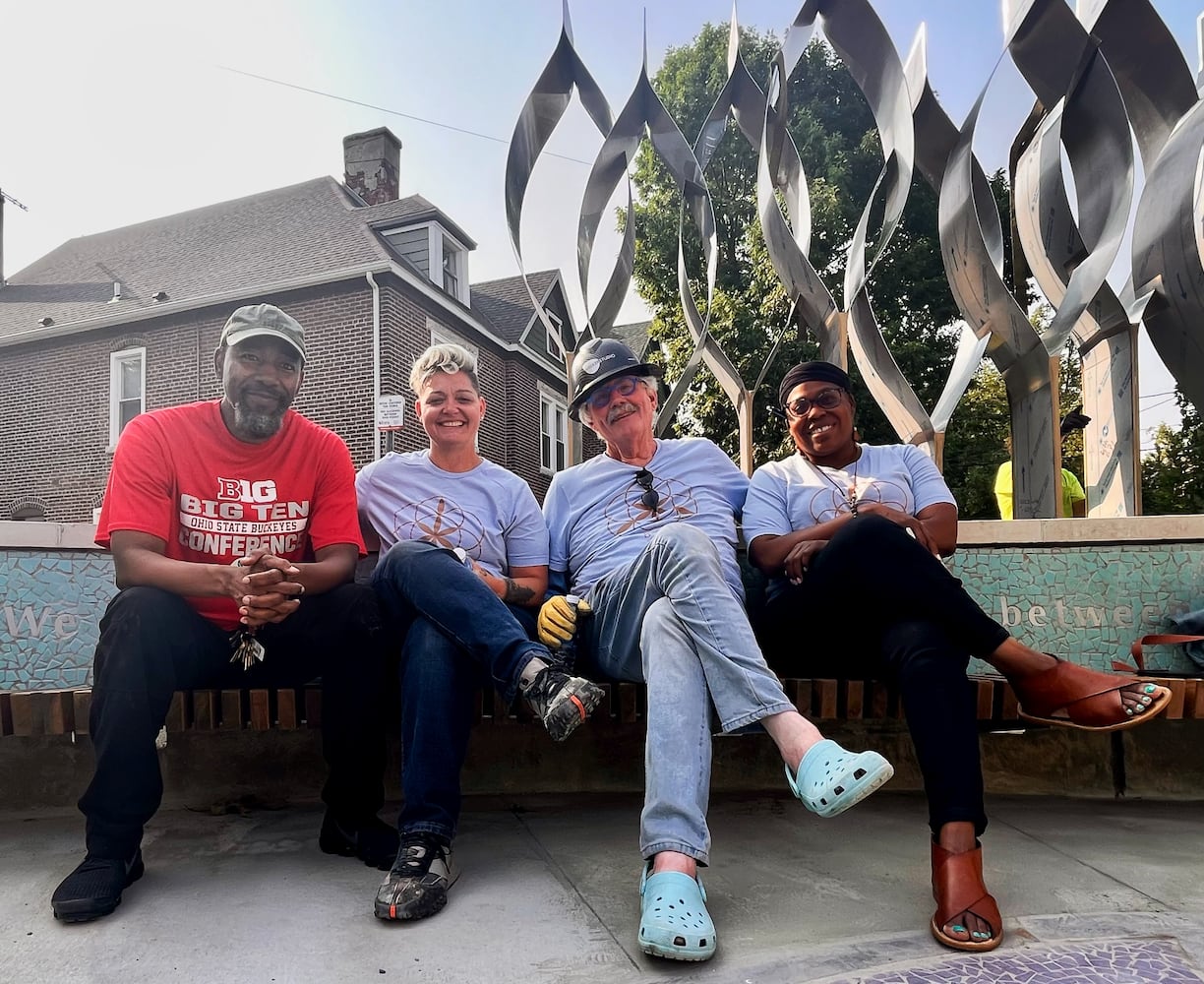How can artists respond and make a difference? Mosaicist Jes McMillan, artist James Pate, poet Sierra Leone and I as an architect/sculptor have all known and admired each other’s work for years. When the national call for entries came to create a memorial, we saw a unique opportunity to come together as a team. We didn’t know “what” we would propose but we had a pretty good idea of “how” we would address the challenge.
Dozens of meetings and surveys by the 8/4 Committee had clearly defined the goals of the memorial including a component of community involvement. As with most memorials, the implication was to design and place a beautiful object or series of objects in a place to be contemplated by observers.
When the run-down, unremarkable plaza site was finally revealed, we realized that we had a mess on our hands. Our first response was: “We are peacemakers and place makers. In order to make a place of healing we must first heal the place.”
So we did the opposite of what was expected. Instead of the easy approach with the wind to our backs, we “turned our boat into the wind to fill our sails” and tack our way forward.
We decided to start from scratch. The only artifact we kept was the existing curved retaining wall. The concept of creating a space instead of an object, an outdoor living room, for people to gather together was central to our thinking. Any objects or sculpture we created would sit back, elevated in the landscape to reinforce the main idea.
The curved wall made us think about circles and the “circle of life.” We studied ancient sacred geometries as a memorial and gradually focused on the “Seed of Life” symbol. This simple abstract form gave us a lot of creative freedom. After many versions we eventually made it our own with nine “seeds” representing the nine victims in a giant mosaic. It soon became our working title for the memorial. The wall eventually transformed into the Unity Bench, and the “seeds” were translated into the “Seed of Life” sculpture. All of this is infused with carefully created poetic text, symbols and subtle complexities. Countless hours of collaboration with community partners, contractors, fabricators and craftsmen made the art come to life.
Finally, community engagement was key to the healing process of building the massive “Seed of Life” mosaic, “Unity Bench,” “Seed of Life” sculpture, and “Re-member the Seed” poem. It took a year of design and execution with expert steel fabricators and over 5,000 volunteers organized by the Mosaic Institute. As artists, we went on an emotional journey we didn’t expect. By helping the community to heal, we healed ourselves and are optimistic we healed the place.
For future generations to come, we are hopeful the “Seed of Life” and art will stand the test of time becoming even more meaningful with new interpretations of tragedy and life.
Terry Welker, FAIA, is an architect/sculptor and the “Seed of Life” Team Leader.
About the Author

